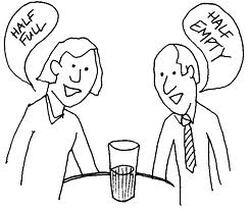 We’re going to be a little bit controversial this week, so we will understand if you don’t agree with us (by all means, tell us in the comments section). But we have given this subject a bit of thought and our reasoning is solid, we think. We are recommending that after you have published an ebook, you wait for a period before you publish a paperback (or hardback) version. We suggest waiting 4 - 6 months. This is contrary to the way mainstream publisher’s operate. They publish a hardback copy first (mainly to send to reviewers) then a paperback then, finally, the ebook. Nowadays it is common to publish all three fat the same time, but some publishers still spread the process out over 9 to 12 months.  So, why are we recommending publishing the ebook first and then delaying a hard copy for up to 6 months, when mainstream publishers do the opposite? Mainstream publishers have an army of proof-readers and editors who work with the author to get it ready for publication. So, when they put out their hardcopy version, they are already confident about its narrative quality and that it is error free. Even then I’m sure we have all read books from mainstream publishers that have been error strewn. But Indie authors only have an army of one; themselves. If you want to change an ebook after publication, it is easy to do so. If you wish to change a paperback, it is much harder. OK, I’ll have to qualify that and say that some publishing platforms make it harder than others. 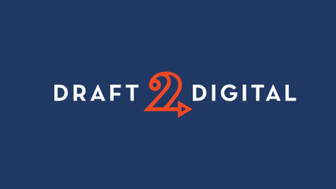 Because of the way Draft2Digital publish their paperbacks, using 3rd party printers, they don’t allow you to change the paperback content once you have approved the book for publication. You have to purchase “print change tokens” which cost $25 (about £20), which covers the cost of getting the 3rd party printer to make the changes.. So, why should this matter? Well, experience shows us that 30 seconds after you click on the “publish” button, you will spot a typo in the MS. Or, more likely, your readers will spot a typo. Secondly, once the book starts to sell you start to get reviews and if the reviews are negative you will want to do something about them. 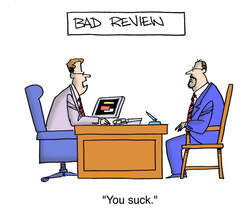 So, you need to give yourself some breathing space to correct the typos and to make changes to the MS to address the issues that have resulted in you getting the negative reviews. There is a psychological factor that will come into play as well and that may affect the sale of future books. If someone pays $5 for an ebook and they aren’t happy with it, you may get away with it. For those sorts of prices, the reader may not bother posting a review. They may even give the author a second chance and buy their next book. BUT For a $15.99 (£13.99) paperback the rules change. For that price the readers are much more likely to leave a negative review if they don’t like the book and they almost certainly won’t buy a second book by the same author. OK, in an ideal world your book will be perfect the day you publish it. You will have used the feedback from both your alpha and beta readers to improve the book. You will have formatted it properly and you will have eradicated all those pesky typos and incorrect homophones. But we don’t live in a perfect world. Some of those things will have slipped through. Even if you have paid a proof-reader to check your book (like a mainstream publisher does) some may still slip through because proof-readers have human failings too. You also may not have used alpha or beta readers, so you have no idea if your book is any good or if it can be improved. 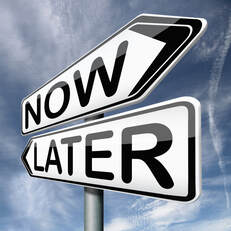 By delaying the publication of your hardcopy version, you give yourself the time to sort out the teething problems. Your ebook readers effectively become your beta readers, editors and proof-readers. As a quality strategy it isn’t one we would recommend, but we are realists and we know from experience that this is what some authors are unwittingly doing. Now, I haven’t mentioned Amazon, but that is because they are more forgiving. If you want to change your MS for the hardcopy on Amazon, you are able to do so. But, as we’ve said in other blogs, Amazon is only one sales channel, and you need to be covering all possible bases. That means that if you are going to change the MS on Amazon you will also need to change it on D2D and that is going to cost you money. 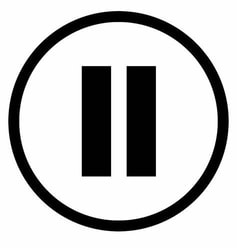 And don’t forget those psychological connections between pricing, reviews and future sales. They apply equally to books bought on Amazon. So, when you’ve published your ebook and you get that prompt that says “Do you want to start your paperback?” please resist the temptation.to say yes. Take a step back, take a deep breath and say “No, I’ll leave it for now. I’ll come back in 4 - 6 months’ time when I’ve seen if there is anything wrong with my ebook version and had time to fix it”. Finally, if you are lucky enough for your ebook sales to go stratospheric, you can always change your mind and roll out the hardcopy before the 4-6 months has elapsed. If you have enjoyed this blog, or found it informative, then make sure you don’t miss future editions. Just click on the button below to sign up for our newsletter. We’ll even send you a free ebook for doing so.
0 Comments
 Back in June of this year we blogged about the way some authors don’t engage properly on social media, so they don’t get the best results out of it. We called it “fake engagement” and there is a lot of it about. We are happy to say we now have a case study we can use to demonstrate the value of good quality social media engagement, so we can show how it is superior to fake engagement. 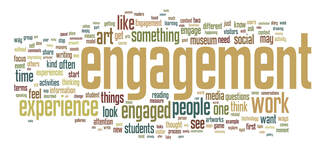 It is the basic principle of social media marketing that selling should always be secondary to engagement. If people think that all you want to do is sell them something, they will scroll past your posts. That means you spend a lot of time and effort trying to market on social media, only to get poor results. So, to our case study. A reader of our blog about fake engagement, we’ll call them Red Bus, got in contact with us to say they make regular posts to their account on X (formerly Twitter) related to the themes of their books. They are just statements of fact that Red Bus thinks readers may find interesting. The posts don’t have URLs linking them to Red Bus’s books, because that wouldn’t be engagement, that would be selling.  This week Red Bus got a response to one of the posts from someone we will call Maple Leaf. Red Bus responded back and a virtual conversation started up, with Maple Leaf talking about their dad’s experiences and Red Bus making contributions based on personal experience. This went on for about two hours, off and on (maybe a dozen posts each) when Red Bus had to end the conversation, as there were other things that needed doing and X is too much of a distraction. Red Bus said goodbye and thanked Maple Leaf for the chat, logged off X and thought no more about it. 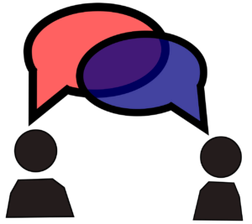 Red Bus logged back onto X the next day and found that Maple Leaf hadn’t quite terminated the conversation the previous day. Maple Leaf had asked a couple of questions about Red Bus’s books, relating to where they were available. Naturally, Red Bus replied, providing the necessary information. But Red Bus didn’t include a link to the books. That would be too pushy, Red Bus decided. Again, Red Bus didn’t think too much more about it and got on with the business of the day. Later that day Red Bus logged onto their KDP dashboard, to see that there had been a sale in the territory where Maple Leaf lived. A coincidence? Maybe. But Red Bus didn’t think so. Logging back onto X, Red Bus saw a notification from Maple Leaf, and sure enough, Maple Leaf said they had purchased one of Red Bus’s books. So, quality engagement on social media had led directly to a sale. At no point did Red Bus link to any of the places their book is sold. At no time did Red Bus suggest to Maple Leaf that Maple Leaf might like Red Bus’s books.  Maple Leaf took the decision to ask, and then took the decision to buy, without any prompting. Now, you may think that a single sale is no big deal, and you would be right – and wrong. Firstly, if Maple Leaf likes Red Bus’s book, they may buy the other books that Red Bus has written, so one sale turns into several. Secondly, if Maple Leaf likes the book(s), they may leave a review and we all know how valuable reviews are. But, most importantly, Maple Leaf may tell their family and friends about the new author they discovered on X, and suggest that the family and friends take a look for themselves. 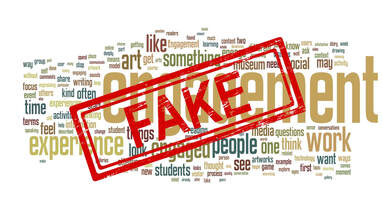 Because Maple Leaf has had a positive experience as a result of this engagement and that is so rare it may be worth mentioning to others. That is the sort of result you can get from proper engagement. It is not the sort of result you will get with posts saying “Can anyone see my posts?” It is not the sort of result you will get with posts like “Who is the best band in the world?” Or with “Should you put pineapple on pizza?” And it is certainly not the result you will get just by posting links to your books. Growing a market through social media is a painfully slow process sometimes. But if you do it right, it can pay off, as Red Bus found out this week. If you have enjoyed this blog, or found it informative, then make sure you don’t miss future editions. Just click on the button below to sign up for our newsletter. We’ll even send you a free ebook for doing so. 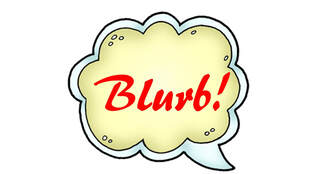 In writers’ groups on social media, authors often post drafts of their blurbs, asking for opinions. It’s a good idea, because it can gain valuable feedback. But in reading these drafts, it is quite obvious that some authors haven’t read any of the numerous blogs that have been written on the subject of blurb writing. In the vast majority of cases, the blurbs won’t sell the book because they fail to capture the interest of the reader within the first few words. Instead, they try to precis the story and what they end up with doesn’t sound interesting enough to sell the book. But experts on blurb writing often say they can write a blurb that will sell a book without even reading the book. And this is a theory we subscribe to, in broad terms, because in the blurb you aren’t telling the story, you are telling the excitement of the story.  You aren't selling the story, you are selling excitement. You aren't selling the story, you are selling excitement. Let’s take visual media (movies, TV and games) and think about how they sell their product. They never try to tell the story. They try to show the viewer/player how much enjoyment they are going to get if they watch the movie or TV show or if they play the game. Depending on the genre, you will get car chases, explosions, gunfights, people falling out of aeroplanes, zombies trying to eat people, people expressing anger, fear or love. If it’s a comedy you will get jokes, either visual or spoken. What’s the most memorable scene in the movie Dumb and Dumber? Yes, that’s right, the one where Harry (Jeff Daniels) has his tongue frozen to the street sign. Yes, that’s in the trailer! By the time a good thirty second trailer is over, people are already setting reminders on their TV, booking seats at the cinema or they are downloading the game. The movie, TV show or game may be the worst ever, but you would never get that from the trailer. Because the trailer looks exciting/horrific/emotional/funny, and the audience wants to see more. The blurb is a book’s trailer, so it has to work the same way.  The reaction many book blurbs get. The reaction many book blurbs get. So many book blurbs just don’t sound entertaining enough. By the end of the first paragraph the reader has already lost interest and is scrolling onto the next book in the search results – somebody else’s book! We try to follow a three paragraph structure for blurbs. If you haven't sold the book by the end of the third paragraph, you probably aren't going to sell it at all. Research has shown, however, that many readers never get past the first paragraph. So that is the crucial one. If that hooks the reader, then the other two paragraphs clinch the sale. 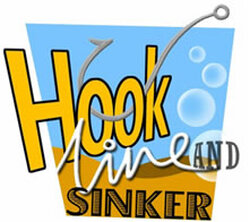 We call this approach (very unoriginally) “hook, line and sinker.” Hook gets the readers’ attention, line reels them in and sinker makes the sale. (Note for the pedants: we know that is not what a sinker does, but we don’t care about that. We just want three simple words to remind us that the blurb comes in three parts. We don’t claim that our fishing metaphor is perfect.)  But the hook is crucial. It does 80% of the work in selling the book, because if it isn’t sharp enough, the reader’s attention will already be moving onto the next book in the search results. A good hook is made up of three parts (do you see a trend emerging here?): character – conflict – consequences. Who is the character, what conflict have they become embroiled in and what are the consequences of failure? But it also has to indicate the book’s genre without wasting words by making it explicit. If you write westerns, you might use the words gunslinger, drifter or cowboy. If you write medical romances, you might mention a doctor or a nurse. These indicate the genre without having to describe the genre. The hook can be written as three sentences, or as a single sentence. That isn’t so important. The important thing is that you have less than fifty words to get those things across in an exciting manner. Yes, 50! So, no room for lots of adjectives. No room for descriptions. No room for sub plots. No room for backstory and definitely no room for “world building”. 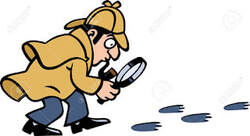 It has to be the tightest writing the author has ever done, because, if the reader’s mind starts to wander, they’ll never get them back. Here is an example: “When Private Eye Harry Jones was asked to investigate an errant husband, he had no idea it would nearly get him killed.” So, from that sentence we get genre (crime), we get the main character (Harry Jones) and we get the conflict and the consequences in the single word “killed”. To save you having to count, that was just 22 words. I didn’t need 50 and the reader will either be interested in finding out why a routine investigation nearly got Harry killed, or they won’t. I’m not trying to say that example is perfect, but it is the sort of thing blurb writers aim for as a first attempt. A 3 sentence example might be “A private investigator. An errant husband. A deadly assignment.” We still have the character, but without using his name. We still have the genre. We still have the conflict and the consequences. Some genres lend themselves to that approach better than others. I probably wouldn’t use the 3 sentence structure for a romance (though that doesn’t mean it can’t be used). 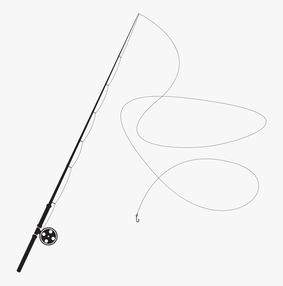 The second paragraph, which we call “line”, expands on the first to provide it with context. There are a few rules, mainly “don’ts”. 1. Don’t include other characters, focus on the protagonist (or MC if you prefer). 2. Don’t include sub-plots – stick to the main plot throughout. 3. Don’t get into world building, locations or time periods. If the book is set in a specific time period, use a generic term, eg Regency, medieval etc, or just refer to a century. 4. Don’t include backstory. It loses the focus of the blurb. 5. Do ramp up the conflict and the jeopardy. Continuing from our example hook, above, we might develop the line as follows: “When Harry Jones is asked to find out if a client’s husband is having an affair, it leads him into the seedy world of drugs and prostitution. He stumbles on the daughter of an old friend, enslaved to a drug gang. Desperate to help the girl, Harry takes on the gang's boss to set her free.” We can now clearly see the conflict that Harry has to deal with, without using a lot of unnecessary words. At the same time, we introduce a victim that needs help (the girl) and a villain (the gang's boss). 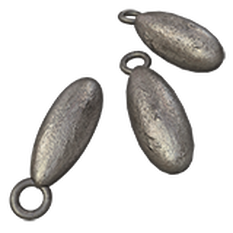 The sinker. The sinker. All that needs to happen now is for the levels of danger to be ramped up so high that the reader has no choice but to buy the book to find out what happens. That is the job of the “sinker” paragraph: “In order to rescue the trapped girl, Harry fights not only the drug gang, but also his own fears. Old memories return to haunt him, paralysing him with indecision. Can he overcome his past and get to the girl before she is killed, or must he watch his friend’s daughter die? Finishing on a question leaves the reader wanting to know the answer. And to find out the answer, they have to buy the book. Yes, it is manipulation, but all marketing is manipulation of some sort.  Different genres use different types of wording. Romance blurbs use phrases like “torn apart by fate” or “star-crossed lovers” or “mutual dislike”. But whatever wording is used, the blurb has to show that the possibility of an unhappy ending is real, so that the reader will want to know the final outcome. The final message we must give you is that the hero must always have control over their actions. They must never be coerced into involvement. So phrases such as “Harry must fight…” or “Harry has to overcome…” are a no-no because they make it look like Harry has no say in the matter. Instead, phrases such as “Harry fights …” or “Harry overcomes…” take out the element of coercion and leave Harry as a hero.  This is because heroes do the right thing because it is the right thing to do, not because they have been made to do it by some outside agency. This is a pretty safe rule when writing a novel anyway. The hero is the hero because they don’t walk away, even though they could. It's is a tough thing to do with some professions. Police, military, firefighters etc have to obey orders, so what we are talking about in a blurb has to be the character going above and beyond the call of duty. Yes it’s the cop’s job to catch the killer, but it isn’t their job to dangle from a ledge a hundred feet up while they do it.  Here’s a free offer for you. If you want to try out your ideas for your blurb, email it across to us at the address on our “contacts” page, we’d be happy to provide you with a bit of feedback, free of charge. Of course, if you’d like to browse our books catalogue while you’re waiting, we’d be delighted. You’ll find some stuff to read on our “free stuff” page. Pull up a seat, pour yourself a cup of coffee and we’ll get back to you as quickly as we can. If you have enjoyed this blog, or found it informative, then make sure you don’t miss future editions. Just click on the button below to sign up for our newsletter. We’ll even send you a free ebook for doing so. Note: The names of companies are provided for information purposes only and are not recommendations. We warn you now, this is a very long blog, but it contains a huge amount of useful information. 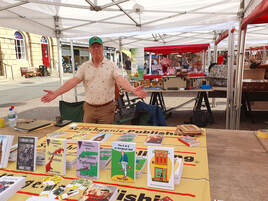 Author Robert Cubitt at Newark Book Festival Author Robert Cubitt at Newark Book Festival One of our authors, Robert Cubitt, has attended several book fairs as a seller this year and learnt quite a few tricks about selling books direct to the public. This blog acts as a “case study” for anyone else who is considering taking this route to sell some of their books. I’m sorry that this blog only relates to UK events, but most of what we talk about can be applied in any country in the world, so it still makes it a worthwhile read. But first of all, a reality check. Book fairs and similar events aren’t going to turn you into a best selling author. All the exhibitors that Bob spoke to while attending these events had the same stories to tell regarding sales volumes.. You may sell a few books and people may search out your books on-line later, but don’t load up a van with hundreds of copies hoping to go home with an empty van because it isn’t going to happen.  But book fairs aren’t just about selling books direct to the public. They are a shop window. Not everyone who looks in a shop widow buys what they see straight away. Sometimes they go home, think about it for a bit and then come back and buy. Obviously, by that time the book fair is over, but there are ways of accommodating that which we will discuss later. Firstly, it is essential to do some research on the fairs you want to attend before you reserve your place. There is usually a contact email address to which you can address questions, but finding out who else has been to them in the past and what experiences they had is also helpful. Not all book fairs are the same. One of the ones Bob attended was aimed mainly at the second-hand book market and it’s pretty hard to sell your book at a profitable price when the stalls around you are selling all their stock at a fraction of what you are charging. It was noticeable from the behaviour of the people attending that they were interested only in bargains. The fair wasn’t an entirely wasted journey, but Bob barely covered his costs.  Some book fairs have speakers or people reading extracts of their work. You could even offer to speak yourself. It almost guarantees sales (but make sure to take someone with you to look after your stall while you are speaking. You don’t want to miss any sales). The next thing to consider is the cost for the “pitch”. Costs range from about £5 at smaller fairs up to £40 or £50 ($35-$45) at the larger ones. For one event, which ran over a weekend, Bob also had to have a hotel room which cost a further £100, plus meals. Including fuel, you can call it a £200 investment for the weekend and you won’t be far out. There were a few other costs, and a we’ll be discussing some of them.  Given what we said about the potential to make sales, it is therefore advisable to work out how many books you would have to sell to recoup your costs, to see if it is worthwhile going. Obviously, the closer you are to the venue, the more profitable it is likely to be. However, a lot of the value in bookfairs isn’t in actual sales. It is part of a marketing strategy and has to be treated with that in mind. You may not sell a single book on the day, but it could result in several sales after the event. It isn’t unusual to see people photographing the book covers and they aren’t doing that because they’re into photography. Bob actually asked someone why they were doing it. and they said it was because they were compiling a list of books they were interested in so they could compare and contrast them later, before buying on-line.  The next cost is that of the “author copies” of books, because you can’t sell product and promise to post it later! Of course, all of that expense is tax deductible, but has to be paid out in the first place in order to reclaim it later. So, was it worth that investment? Yes for 3 events, no for one (the one focused on secondhand books). Oxford was a particularly profitable one, with good reasons why. It is advertised as an “Indie” book fair, which means that customers know what to expect. Bob didn’t realise how many people actually search out Indie authors until he saw hundreds of them coming through the doors for that fair.  So, what did Bob learn from these events? The greatest thing about them was the opportunity to meet and interact with readers. These people are the life’s blood of authors, and we need to understand them. The best way to do that is to talk to them and book fairs provide an excellent opportunity to do that. While the main purpose of being at the book fair was to sell books, this opportunity to meet readers shouldn’t be underrated.  Booking a place at a book fair isn’t always easy. There isn’t a universal directory that lists them all (business opportunity?). Some book fairs leave it quite late to decide what dates to hold their events. It also isn’t easy to find out about the smaller fairs. The search results are dominated by the big, international events, which aren’t suitable for most Indie authors. Even if you could get a stall, the cost would be prohibitive. So, finding the smaller fairs is a bit of a challenge. We’ve provided some links to help you out, at the end of the blog. (sorry if you aren’t in the UK. You’ll have to do your own research).  The value of networking at bookfairs is important when it comes to finding out about other book fairs, but we’ll talk more about that later in the blog. Most (probably all) book fairs provide a table on which to set out your stall, but for outdoor fairs in the summer (and some at Christmas), you may need to check whether you need to provide your own shelter from the weather. Two were outdoor events and provided covered market stalls, which met Bob’s needs. But you should definitely plan to take something to sit on. Folding camping chairs or garden chairs are ideal. Once at the fair, there are many other things you have to consider, but they divide mainly into “selling your book” and “other things to think about”.  Social Media Turn your social media connections into customers by advertising your presence at the book fair through your social media posts. Bob posted the day before the event took place and again on the day of the event itself. By using the “schedule” facility that most social media channels have, the details can be posted even while you are driving to the event. If the event has a website, post a link to it. The organisers will appreciate it and it will help people to find out more information. Also link to the organisers’ social media accounts where appropriate. Bob also posts after the event to thank people for turning up.  Selling Your Book Make sure you have enough stock. There is no point in exciting interest in your work, only to have to tell the buyer that you’ve sold out. Exactly how many copies of a book you need will depend on the size of the book fair. If it’s big one, like Newark, then 50 books in total is probably enough. For a small event in a village hall, as few as 20 copies may be adequate. What you don’t sell at one book fair will give you a head start for the next one. If you write series, have at least the first and second books in the series available. If it’s a trilogy then having all three titles available is OK, but if it is a longer series there is no point in having later titles, because people are unlikely to commit that much money to an untried series. But make sure that buyers have some way of finding your books when they are ready to buy the next book in the series (see more below). 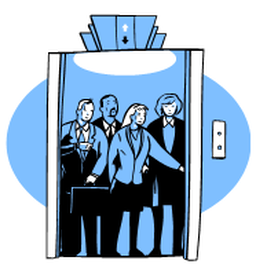 The next thing is to have all your “elevator pitches” prepared, one for each book you have on sale. While some of the people browsing the stall will pick up the book and read the back cover blurb, many of them just pick it up and ask “What’s this book about?” At that point it doesn’t do to be umming and ahing. You have to be ready to tell them about the book in as concise a way as possible. If you aren’t sure what an elevator pitch is, or how to compose one, Google one of the many blogs on the subject. Here’s one we found, but there are many others. https://www.wordstream.com/blog/ws/2022/08/16/elevator-pitch-examples-templates You should have elevator pitches ready anyway, even if you don’t plan to attend any book fairs, because people will ask about your books if they know you are an author. One of our authors once sold a book at a wedding she was attending, based solely on her elevator pitch.  Which brings us to stories. Not the story that is told in the book, that has already been covered above. No, I mean the story of how the book came to be written. Readers love those stories and once they’ve heard them it is far more likely that they will buy the book (but there is no guarantee). Bob has a very good story about how he came to write the biography of his father’s war service. That story has sold him more copies of the book at book fairs than any of his other titles. Then he tells the customers about how that biography inspired his Carter’s Commandos fiction series, and that sells copies of those books. Next you have to be able to deal with all the usual annoying “Would I like this?” sorts of questions that authors always get. And you have to be able to respond without sounding sarcastic. The best way our author found of responding was to reply with a question of his own, such as “What sort of books do you usually read?” 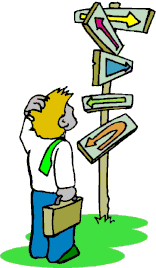 Be prepared to grasp at any straw to connect their reply to your book. It doesn’t matter how far removed from your genre their preferences may seem, making a connection of some sort could lead to making a sale. But don’t be afraid of directing people to other stalls, where they may find what they are looking for. Some people just don't have an interest in your genre (whatever it is). I’ll talk more about that later in the blog. People love a bargain, so being able to discount the price of your books compared to bookshops and on-line retailers is a big plus. Bob charged about £1.50 ($1.35) below the Amazon list price and was still able to make the same level of royalties as he does on-line. His printed price list shows his price and the Amazon price side-by-side, so people know they are getting a discount (they can also check for themselves). Bob also offers further discounts if people buy more than one book. Know what royalties you expect for each book, how much the books cost you to buy (don’t forget the delivery charges) and price accordingly.  One of Bob's props - his father's medals. One of Bob's props - his father's medals. Take “props” with you because they attract attention and encourage questions. Bob displayed the original cover art for his father’s biography and his father’s medals but on other stalls he saw artefacts that relate to fantasy, sci-fi and horror genres. There are internet retailers that sell that sort of stuff, so making a small investment is often worthwhile. If nothing else they are conversation starters and conversations sell books. Other things to think about. Display is a critical part of attracting attention to your books. Not only must the browsing public be able to see the cover, but they should also be able to see the blurb. Bob uses upright stands (available online) to display the book’s cover and lays a copy out flat in front of it showing the back cover blurb. Some sellers print fliers that show the same information, but Bob noticed that fliers often fly away when the wind blows. Books don’t do that. Some sellers also use boxes or small bookshelf units to raise the height of the books. Maybe this is something that you will want to play around with at home to see what works best for your books, when placed alongside other promotional materials such as props. Getting stuff up to peoples’ eye level often helps with sales. Take some freebies and giveaways with you. Bob takes some bookmarks that a colleague made for him. These are handed out to people regardless of whether or not they buy a book. 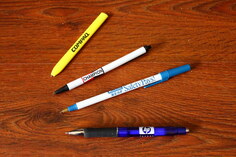 Cheap pens with the title of your book, your name or your website details printed on them are another good giveaway. They can be bought for as little as 20p (about 16c) each, but you have to buy in bulk. Make sure you have plenty of business cards to place on the stall. Even if you don’t sell a book, the browsing public will take something away with them and they may check out your titles later. And slip a business card inside each book, to be found later. This is especially important if you write series. If you don’t have any business cards, they can be purchased on-line from companies such as Vistaprint. You should always carry business cards anyway, because everyone you meet is a potential customer - they just don't know it until you tell them about your book. Another useful marketing tool is to have small bags into which to put purchased books, with a book title, author name or perhaps a cover image on the outside. In these environmentally conscious times, make sure the bags are made of paper, not plastic. Branded bags are expensive, so buy cheap plain brown paper ones then buy a separate roll of stick on labels with your message printed on them and apply one to the other before you go. Bob bought his bags on Amazon and his labels from Stickythings Limited and the total cost was another £50 ($40).  Bob also bought a tablecloth with our Selfishgenie branding on it (see photo above - we paid some of the cost as it is part of our marketing). It wasn’t cheap, but the cost can be recouped over several book fairs. Take plenty of small change with you. You don’t want to lose a sale because you haven’t got change for a £20 note. Make sure you have a way of accepting credit cards, debit cards, Applepay etc. There is no point in losing a sale because you only take cash. There are a number of companies that provide Bluetooth connected card readers these days and their charges are quite reasonable if you are going to attend a lot of book fairs or “meet the author” events. Bob Cubitt uses Sumup. There is also a long list of sundry items that you might need to have with you. Bob has a checklist he uses before he leaves home, just to make sure he has everything. You can download a copy (yes, it’s free) at the end of blog.  One of the big opportunities offered by book fairs is networking with other authors. They know things that you don’t, and you know things they don’t. Find out about the sorts of books they sell and if that turns out to be the genre your browsing members of the public read, don’t be shy about pointing them in the direction where they can find the right sort of books. And make sure that the authors on other stands know about your books, if they haven’t stopped by to find out for themselves. Ask them about other book fairs they’ve been to and note down the details. Also discuss writers’ groups, both in real life and virtual ones. Other authors are your allies, not your rivals. So, that was our quick whizz around the world of book fairs and other book selling events. If you have any questions, feel free to ask them in the comments section or you can email us at the address on our “Contacts” page. if you have enjoyed this blog, or found it useful, be sure not to miss future editions. Just sign up to our newsletter to be kept up to date. We'll even give you a free ebook if you do. Here’s a few websites for Indies who live in the UK (and one for Indies who live elsewhere). http://smallpublishersfair.co.uk/book-fair-calendar/ https://www.casita.com/blog/uk-book-fairs-you-should-check-out https://www.oxfordindiebookfair.co.uk/ https://10times.com/publishers-fair https://fromesmallpublishersfair.co.uk/ https://www.newarkbookfestival.org.uk/ Multiple nations: https://publishersarchive.com/2023-book-events.html Children’s books: https://www.theschoolrun.com/best-childrens-literary-festivals-uk Black History Month: https://curlytreats.co.uk/2023-uk-black-history-month-events/black-british-book-fair/ For people in the North West of England (or who can get there easily), try this Facebook page. This Facebook page deals in book signing events, which are just another form of book fair. And the download of Bob's book fair checklist:
|
AuthorThis blog is compiled and curated by the Selfishgenie publishing team. Archives
June 2025
|
||||||
 RSS Feed
RSS Feed